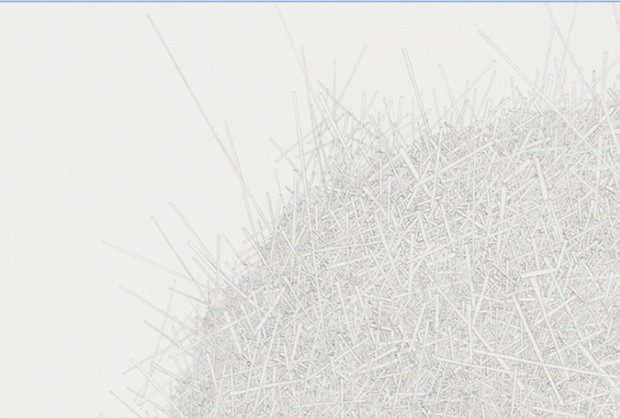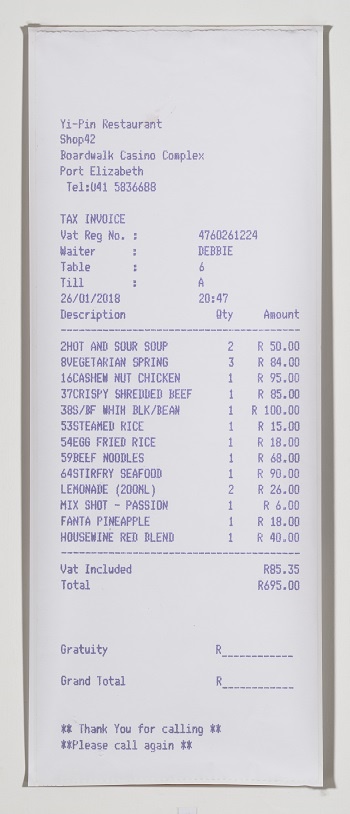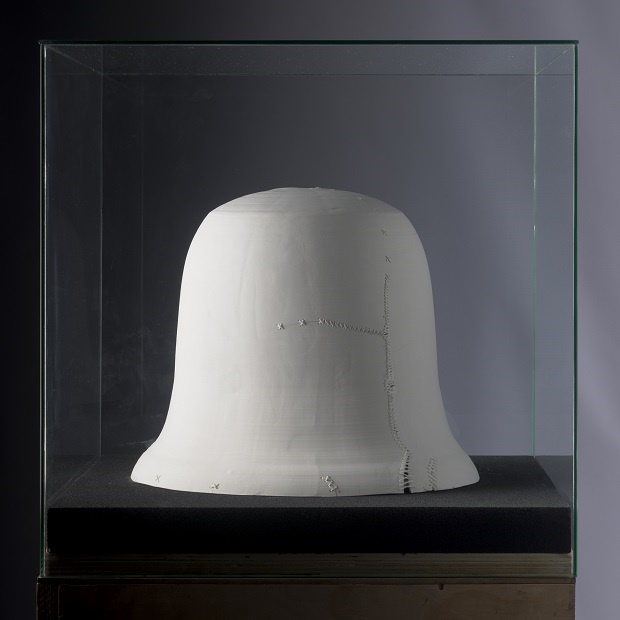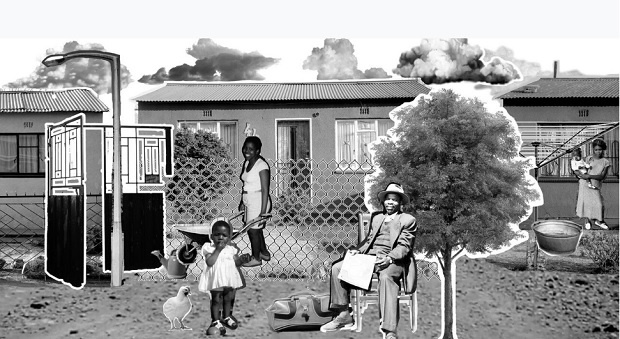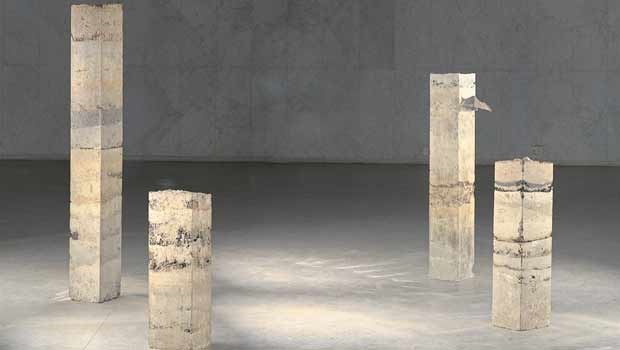
Jessica Storm Kapp, Mapping Time
A first look at a Dropbox folder of the Sasol New Signatures award winners had Grethe Kemp confused. Then she visited the exhibition and heard what the artists had to say.
Sasol New Signatures is the longest-running art competition in South Africa and is integral to giving unknown artists a platform on which to show their work.
Open to those who have not had a solo exhibition yet, it’s perfect for young or emerging creators to enter.
This year’s entrants showed a definite trend in moving away from painting on canvas and towards massive experimentation with different mediums.
Materials used by the top 100 included a vast array of things – Omo washing powder, hospital beds, steel, wood, sand, leather, ceramics, plastic crates, audio recordings and even computer programs.
The winning work by Jessica Storm Kapp from Stellenbosch, entitled Mapping Time, consists of stamped columns of earth embedded with found objects. Hailing from Knysna, she used layers of soil and found objects to document the Knysna fires, as well as obliquely touching on themes of time, history and land.
A simple picture of the work is difficult to understand; only when you’re physically at the exhibition and go up close to the layers of sand and embedded objects do you get a sense of the work.
Similar is runner-up Peter Mikael Campbell’s pencil drawing Kaisen (“change for better” in Japanese).
On paper it looks like a grey stain, but when you look closely you see thousands of painstakingly drawn rectangular fibres that come together to form an incredibly serene and contemplative work.
The similarity continues with the merit award winners.
Megan Serfontein created a computer program that blurs an image of the viewer when they stand in front of the monitor – an effect that can hardly be captured on this page, while Debbie Fan’s restaurant receipts only take on their real meaning when you see how physically large they are.
The crux of the matter is that art – especially art that is made from nontraditional materials – is inscrutable if you don’t see it as it’s meant to be viewed. This page is thus only a precursor of the actual works. To experience them, you’ll have to go to the gallery and see them for yourself. You won’t be disappointed.
- Check out the works at the Pretoria Art Museum until October 7. Be sure to also check out Sasol New Signatures 2017 overall winner Lebogang Kganye's solo exhibition, which is also on display at the museum
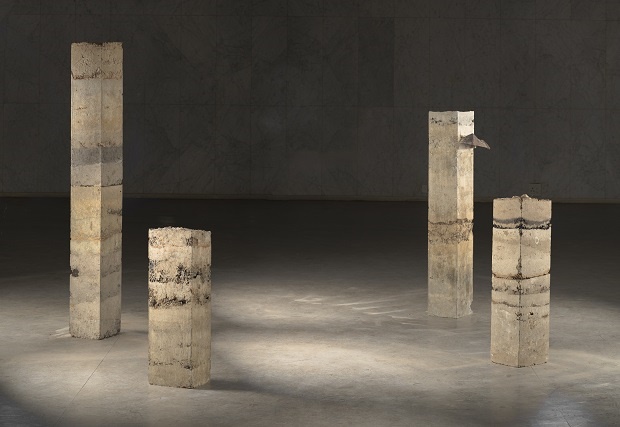
Jessica Storm Kapp’s Mapping Time
Says the artist: “Living in Stellenbosch for the last four years, doing my degree in fine arts has been quite a difficult thing for me to navigate as I’m someone who identifies very strongly with my home. Getting the phone call saying that the Knysna fires had happened and not being able to support the people that you love or experience that place for one last time was something I grappled with.
After the fire I went home and I started collecting materials from around my house – soils, charcoals, ash – anything I could find. Then I started venturing deeper and deeper into the forests that surround my house and I found really interesting objects. These objects became so important in my work because I was really interested in where they came from and who they belonged to.
Something that’s interesting about a fire is that you don’t really remember it. I’ve been home months afterwards and the forest has completely grown back, the houses have been floored and new houses have been built on those old foundations and it doesn’t look at all like I remembered it from a year ago. So I wanted to try to capture that period. I started using these materials that were from the time of the fire and compacting them into different layers to try to encapsulate this history, this feeling of another time.”
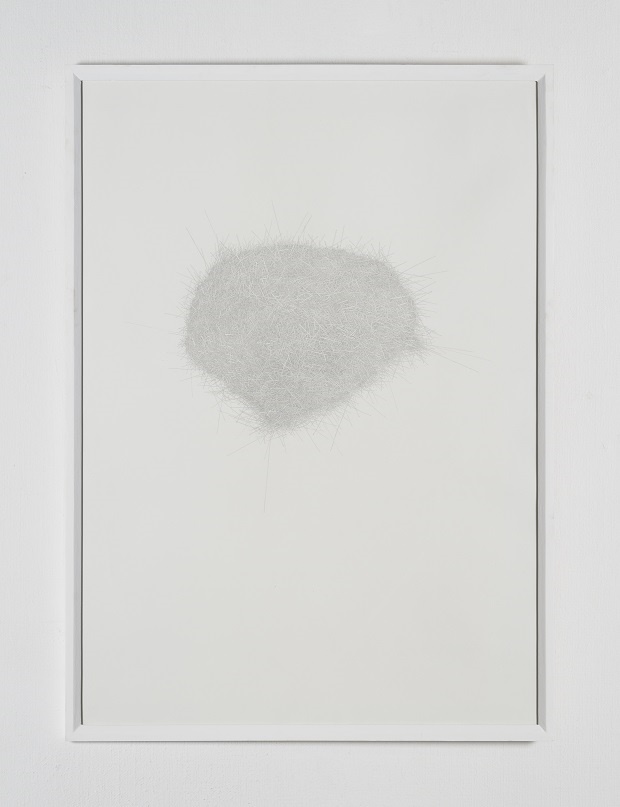
(detail of work)
Peter Mikael Campbell’s Kaisen
Says the artist: “I wasn’t intentionally trying to say something with this work. I think it’s better to view it in the same way that you would listen to a beautiful piece of music – it’s more a phenomenological experience. A better way of looking at it is to view it from the perspective that I view myself almost as an artist monk. I have an overarching philosophy and a belief in art and out of that process artworks emerge. I believe that art can show us the light and the way to a higher state of being.
I myself have no interest in creating art that is pointing to all that is wrong in the world around us, but rather to create something that has a certain type of emerging quality that you might describe in a non-cynical way as beauty. That practice of making things that are beautiful is not only meditative but a kind of philosophical exercise. If you can learn to see beauty in something as simple as a pencil drawing, it becomes a little bit easier to see beauty in the people around you, in the landscape and the world.”
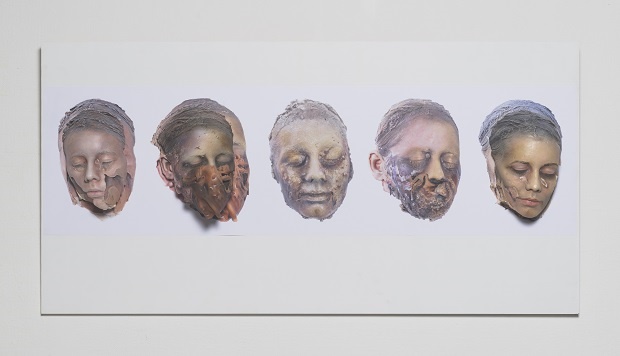
Kelly Crouse's C23H27N3O7
Says the artist: “As a child I suffered with a very rare skin disorder called oral dermatitis. That drove me to doing this work - I wanted to understand a little bit more, why the disease crippled me so much as a child. Naturally I’m an introvert but it made it even worse because oral dermatitis affects your face, and when you’re interacting with someone you notice their face first.
Rather than taking the skin disorder as a flaw I decided to embrace it – not make it my identity but say ‘this is who I was’ and find peace with it. In regards to the materials I used – the leather represents skin and when you we tit it becomes soft and malleable and fibres start to peel off of it. To heal my face I had to have the skin on my face shed of. The moulds of my face can be seen as either death masks or live masks. I decided to document my face from what it is now to how I saw my face as a child and how it affected me.”
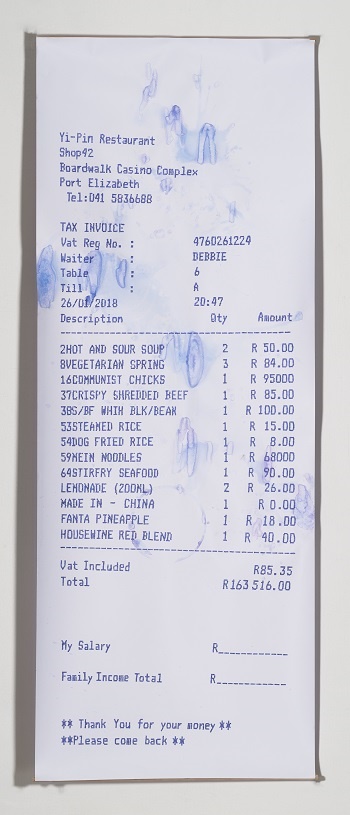
Debbie Fan’s cheque or savings?
Says the artist: “As a waitress, I worked around a lot of food and a lot of paper – paper in the form of receipts. I became very interested in the design and aesthetics of the receipt. I decided to work with it more and zoom in to the original receipt paper of the restaurant. I realised the receipt is printed with individual dots, and that’s how I painted mine – using dots. I decided to make something that is usually very trivial and gets thrown away and enlarge it to 2 metres and force the viewer to look at it and investigate it. I changed the orders and prices to something light-hearted and funny that addresses the stereotypes I face as a Chinese woman.”
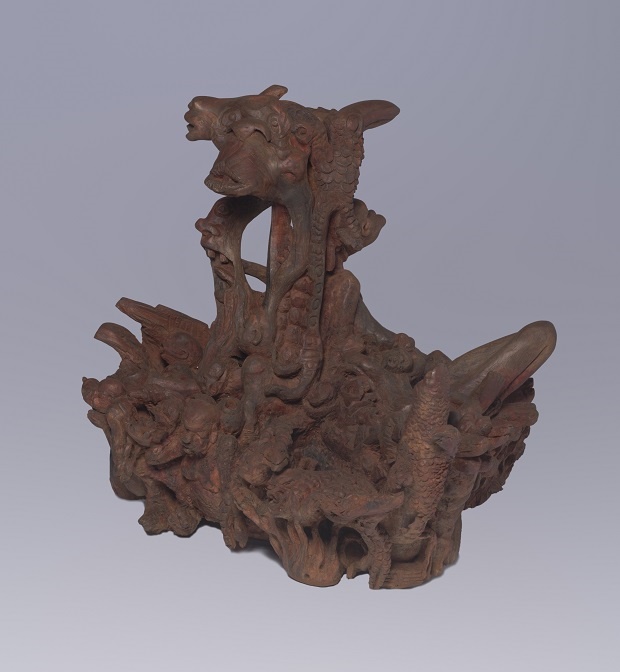
Mulatedzi Simon Moshapo’s The Leader Shall Govern
Says the artist: “This work talks about our suffering part of Africa. The title talks about how the ruler does not want to start ruling. This forces the people to move from the centre outwards, moving from that state to find a place where they can stay. Even if you started well, if you stay in power for a long time, you’ll end up making mistakes. The wood used comes from the place where I stay in Lim-�popo. The carving is a true reflection to me of what is happening. Despite many figures of people and animals, you won’t find a single figure that is happy. I brought this work to Sasol because I knew it would be seen by many South Africans.”
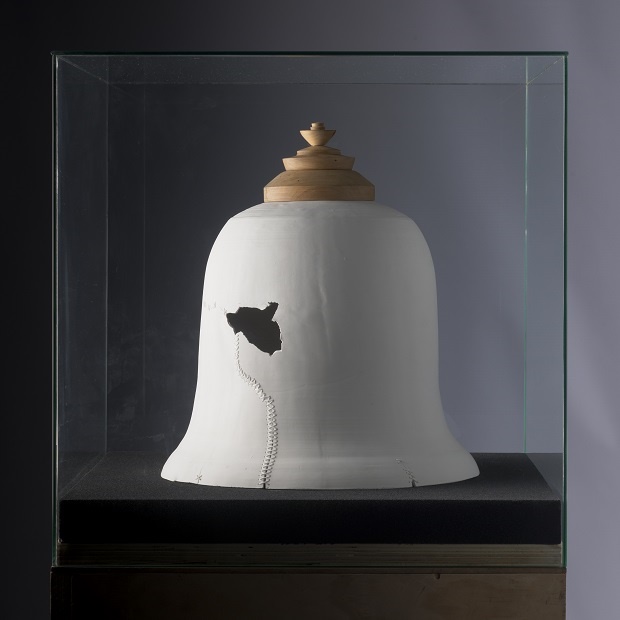
Pierre Henri le Riche’s Ap(peal) & Ap(peal) II
Says 2018 Sasol New Signatures National Chairperson Professor Pieter Binsbergen: “It’s interesting that the artist has chosen to represent the slave bells in fine porcelain. When one fires these they become very fragile and they crack, and he stitches them back together, this is also a way of repairing porcelain in antiquity. The bells are offered to us as museum relics, as if they’re in shipment to a venue where they’re being unboxed from their rough crates where they were shipped from venue to venue for an exhibit.
It’s quite interesting that if we were to chime these slave bells they would disintegrate – so it lays question on historical events – rights or wrongs and historical identity - rights or wrongs, and where we go from here, and the fragility of the situation that we find ourselves in. Where Kapp’s work deals with the politics of geography, space and the memory thereof, this work deals with the same issue but from an identity standpoint.”

Megan Serfontein’s Untitled
Says the artist: “I grew up in a technological background, and what resonates with me is that technology influences the way we see the world, ourselves and others. We treat our phone like another person; when we talk to people through it we’re treating it as if it’s another being. We act differently in front of a lens when we know it’s recording us. How you act when you know that someone is watching is different to how you act on your own. I draw attention to this with the materiality of technology.
Technology warps what it sees; it projects objects to show them in a different way to what your eyes would see. This piece uses a java program that I wrote to take what the camera is seeing and change it. Instead of projecting it live, it takes 80 000 of those pixels per frame per second and shows it periodically. When you stand in front of it, you’re not there at first, stand there for a bit longer and you become clearer, but when you move you disappear. I want to show that technology becomes a set of eyes, a presence that you react to.”
Sasol New Signatures 2017 overall winner:
Lebogang Kganye's Mohlokomedi wa Tora





 Publications
Publications
 Partners
Partners






